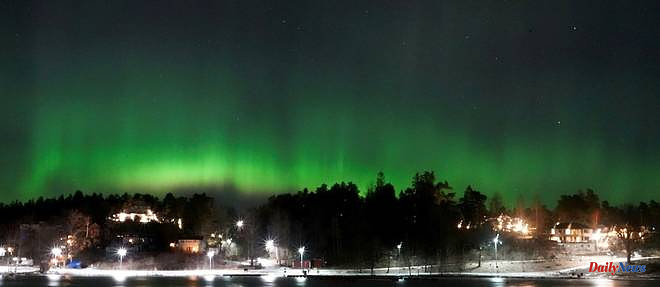The sky of the Swedish Far North was covered Thursday with halos of artificial light after the launch of a sounding rocket, releasing materials into the atmosphere to better study the aurora borealis.
Sometimes called the aurora, they appear to pierce the Arctic night sky with beams of blue, green or purple light.
To unlock the secrets of this spectacular natural phenomenon, researchers from the Swedish Institute for Space Physics sent a rocket from the Esrange launch base near the town of Kiruna in Swedish Lapland on Thursday evening, releasing similar material. to those of fireworks at an altitude of 100 to 200 kilometers (62-124 miles).
Waves of fake white and green colors could be seen, lighting up the sky after 6:30 p.m. GMT and gradually crowding out the 'real' aurora borealis that was then lighting up the sky.
An experiment intended to improve weather forecasts for near space, also called the upper atmosphere, which would better protect satellites and other essential telecom infrastructures.
"Today no one can imagine themselves without GPS, without television, without satellite cable or without a smartphone. But to guarantee access to all this, we must better understand space weather", explained to AFP before the launch Tima Sergienko, the experiment manager.
"All of these things can be destroyed during strong ionic activities" that cause the aurora borealis, he added.
To reproduce this effect, the researchers released barium from aluminum cylinders.
"It poses absolutely no danger to people. It will be a beautiful phenomenon visible in the sky, and don't worry, it's not a UFO", laughed Mr. Sergienko.
Comparable experiments have been carried out around the world in recent decades, but cameras and technology are now better developed, he pointed out.
According to him, researchers can obtain “a lot more information thanks to this type of experiments and optical measurements”.
23/03/2023 21:58:58 - Stockholm (AFP) © 2023 AFP












